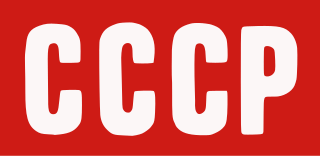
The Unified Team was the name used for the sports team of the former Soviet Union (except the Baltic states) at the 1992 Winter Olympics in Albertville and the 1992 Summer Olympics in Barcelona. The IOC country code was EUN, after the French name, Équipe unifiée. The Unified Team was sometimes informally called the CIS Team, although Georgia did not join the CIS until 1993.

The Union of Soviet Socialist Republics (USSR) first participated at the Olympic Games in 1952, and competed at the Summer and Winter Games on 18 occasions subsequently. At six of its nine appearances at the Summer Olympic Games, the Soviet team ranked first in the total number of gold medals won, second three times, and became the biggest contender to the United States' domination in the Summer Games. Similarly, the team was ranked first in the gold medal count seven times and second twice in its nine appearances at the Winter Olympic Games. The Soviet Union's success might be attributed to a heavy state investment in sports to fulfill its political objectives on an international stage.

The Soviet Union (USSR) competed at the 1976 Summer Olympics in the city of Montreal, Quebec, Canada. 410 competitors, 285 men and 125 women, took part in 189 events in 22 sports. As the country hosted the next Olympics in Moscow, a Soviet segment was performed at the closing ceremony.

The Soviet Union (USSR) competed, for the last time before its dissolution, at the 1988 Summer Olympics in Seoul. 481 competitors, 319 men and 162 women, took part in 221 events in 27 sports. Athletes from 12 of the ex-Soviet republics would compete as the Unified Team at the 1992 Summer Olympics, and each nation would field independent teams in subsequent Games.

The Unified Team at the 1992 Summer Olympics in Barcelona, Spain, was a joint team consisting of twelve of the fifteen former Soviet Union republics that chose to compete together. Estonia, Latvia, and Lithuania competed separately. The team has been informally called the Commonwealth of Independent States team, though Georgia was not yet a member of the CIS when it competed as part of the Unified Team. It competed under the IOC country code EUN. A total of 475 competitors, 310 men and 165 women, took part in 234 events in 27 sports.

The Soviet Union men's national basketball team was the national basketball team that represented the Soviet Union in international competitions. After the dissolution of the Soviet Union in 1991, the successor countries all set up their own national teams.

Ukraine first participated at the Olympic Games as an independent nation in 1994, and has sent athletes to compete in every Summer Olympic Games and Winter Olympic Games since then. The first athlete who won the gold medal for the yellow-blues was Oksana Baiul.

Kazakhstan first participated at the Olympic Games as an independent nation in 1994, and has sent athletes to compete in every Games since then. Prior to the dissolution of the Soviet Union, Kazakh athletes competed as part of the Soviet Union at the Olympics, and were also part of the Unified Team in 1992.
Kolesnikov or Kolesnikova is a Russian surname which means "son of wheelwright". Notable persons with that name include:

The State Prize of the Russian Federation, officially translated in Russia as Russian Federation National Award, is a state honorary prize established in 1992 following the breakup of the Soviet Union. In 2004 the rules for selection of laureates and the status of the award were significantly changed, making them closer to such awards as the Nobel Prize or the Soviet Lenin Prize.
Nikolai Nikolaevich Galakhov is a Russian artist. He is an Honored Artist of the Russian Federation, a member of the Saint Petersburg Union of Artists. Living and working in Saint Petersburg, he is regarded as one of the representatives of the Leningrad School of Painting, and is most famous for his landscape paintings.
The year 1976 was marked by many events that left an imprint on the history of Soviet and Russian Fine Arts.

First National Art Exhibition "Soviet Russia" was one of the largest Soviet art exhibitions of the 1960s. The exhibition took place in Manezh Exhibition Hall.
The Fine Arts of Leningrad retrospective exhibition became the largest showing of Leningrad artists in the Soviet History outside the city, as well as in total one of the most important art exhibitions in USSR of the 1970s. The exhibition took place in the Moscow Manezh.
The Ukraine men's national artistic gymnastics team represents Ukraine in FIG international competitions.







